In Chile the beloved native bee is venerated as carrying the spirit of the dead, but its own numbers are dwindling as farmers use imported species infected with parasites to pollinate crops
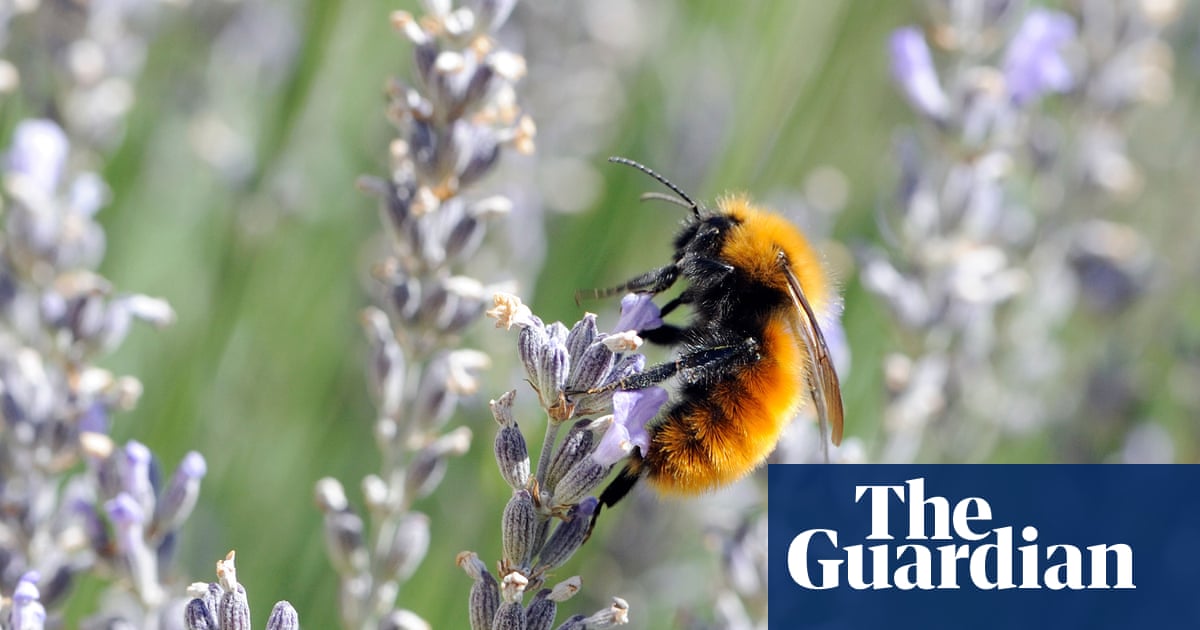
The first time Jos Montalava saw the worlds largest bumblebee he was six years old and visiting his grandfathers house in rural Chile. It was in the tomato patch, a huge, loud, fluffy orange thing buzzing around. I remember trying to grab it, but it kept getting away, although it looked too heavy to fly, he recalls.
During Montalavas childhood, these giant golden bumblebees (Bombus dahlbomii) which can measure up to 40mm and have been dubbed flying mice were a common sight in the town where he grew up in central Chile. Its such a striking, charismatic, colourful bumblebee that used to herald spring, says the 36-year-old entomologist. Now its totally disappeared from my hometown and many other areas.
Montalava says he first became aware the bee was in trouble after he was asked to take part in a study on the potential impact on the native species of importing a European bumblebee.
In 2003, we would see thousands of the native bumblebees in the gardens of the university just outside the capital, Santiago, where I worked. The flowers were covered with these big, fluffy orange bees.
A few years later, however, they were nowhere to be seen. And soon they had also disappeared from the coastal cliffs covered in wild flowers that Montalava visited every year for the annual survey. You hear how species like lions and rhinos could go extinct on the other side of the word, but I grew up with this one and Im witnessing its disappearance. Its happened so quickly, he says.

The cause of the catastrophe was eventually identified, in the form of a creature far smaller than the golden giant. Each year more than 2 million bumblebee colonies are exported from factories in Europe to greenhouses in more than 60 countries. These industrial bumblebees are bred and sold for their fantastic pollination skills: their plump, hairy bodies are perfect to shake the pollen of the male part of the plant to the female. This buzz pollination so-called because of the sound it makes can lead to a 30% increase in the yield of tomatoes, compared with pollination by hand, with a wand.
Around the world the industrial bees travel, pollinating fruits and vegetables, including tomatoes, aubergines, peppers and blueberries. More than a third of the worlds crop production is reliant on pollinators whose annual services are estimated to be worth up to $577bn (440bn) to the global economy.
But the growth of the bumblebee trade for agricultural pollination since the 1980s has been identified as one of the top emerging environmental issues likely to affect global diversity.
Just as European settlers accidentally wiped out native populations in the Americas with a host of European diseases such as measles, which they had no defences against, the European bumblebees can transmit pathogens that kill native bees, says Cecilia Smith-Ramrez, a researcher in pollination and bumblebees at the University de Los Lagos and Institute of Ecology and Biodiversity (IEB) in Chile.
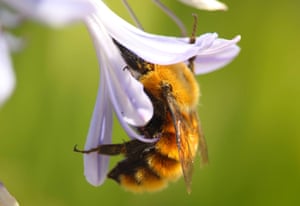
Since 1997, Chile has imported more than 1.2m bumblebee colonies from factories in Belgium, Slovakia and Israel. In 2015 alone, 200,000 were imported. Over the years, they have escaped the greenhouses and spread more than 2,000km (1,200 miles) to the southernmost tip of South America, across the Andes into Argentina and from the Pacific to the Atlantic coast.
The most widely exported European bumblebee is the buff-tailed bumblebee (Bombus terrestris). It is a common visitor to many gardens across the UK where it has been voted the nations favourite insect. But this highly adaptable bumblebee can wreak havoc on non-native ecosystems. Six parasites have been identified on the bee and it competes for nesting sites and food with local bumblebees and other native pollinators, such as humming birds, damaging the propagation of native plants. It also boosts the spread of invasive plants, originally from Europe, suppressing the growth of local flora on which local birds and mammals feed.
Huge public pressure mounted in Chile. Thousands signed up to count bumblebees for Save our Bumblebee, a citizen science project set up by Montalava: Its such an iconic species for us. Known locally as the moscardn, the Mapuche [indigenous] people venerate it. For them it carries the spirit of the dead, so they will never kill it. But although the Chilean government recognised the bee as endangered, nothing is being done, says Montalava, to stop Chilean farmers importing the European bumblebees.
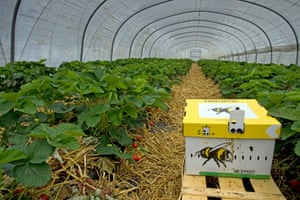
There is clear and mounting evidence of severe environmental costs of this bumblebee invasion, says Smith-Ramrez, who is leading a group of South American scientists preparing to sue the Chilean authorities. We are developing a legal complaint against the agricultural and livestock service (SAG) for allowing the continued importation of non-native bumblebees when there are evident dangers to our native bumblebee and our ecosystems.
In 2016, the Intergovernmental Science-Policy Platform on Biodiversity and Ecosystem Services (IPBES) a UN body set up to assess the state of global ecosystems and biodiversity concluded that there was enough evidence for discouraging introduction of non-native pollinator species.
Biobest, one of the leading exporters of commercially bred European bumblebees, based in Belgium, has admitted that in hindsight Chile should not have imported buff-tailed bumblebees.
The decision at the time has not been the right choice, Jean-Marc Vandoorne, chief executive of the Biobest Group, has said. But 20 years on, he doesnt agree with a ban. In our opinion, stopping production and importation today will not help the recovery of [the giant golden bumblebee] populations.
Yet it could threaten many more of the 26 bumblebee species native to South America. The invaders are expected to spread north to Bolivia, Peru, and Uruguay, as well as further east to the Argentine Pampas and into southern Brazil, where a group of scientists have already raised the alarm.
In Japan, where the buff-tailed bumblebee was first imported in 1991, two of its 22 native bumblebee species have suffered competition from the newcomer. In 2006, the Japanese listed it as a major invasive species and further introductions are not allowed without permission from the Japanese ministries of agriculture and the environment.
In Argentina, the governments attempts to keep out European bumblebees by banning imports has proved futile. These bumblebees have no respect for national borders and their invasion could have significant conservation consequences across South America, so their introduction must be discouraged in regions with their own native bumblebees, warns Marina Arbetman, researcher at the National Scientific and Technical Research Council, in Argentina.
Scientists want European companies and governments to take responsibility. The problem begins in Europe where the companies that produce buff-tailed bumblebees are causing this global biodiversity catastrophe; they have ethical and internationally legal responsibilities, says Smith-Ramrez. She accuses producers of supplying bumblebees with pathogens and selling them with fake certificates that claim they are free from diseases.
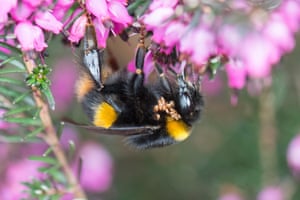
In 2013, UK researchers found that 77% of imported European bumblebees carried microbial parasites, despite claims from the producers that they were free from parasites. The leading bumblebee producers deny that their insects harbour parasites.
These producers are acting with impunity, violating international agreements and selling something that is not true, adds Smith-Ramrez.
Professor Dave Goulson, bumblebee expert at the University of Sussex in the UK, fears it may be too late to save the giant golden bumblebee, but calls for an end to European exports of the bees.
The EU should ban the export of bumblebees to places where they are not native. The reverse would be illegal you could not bring in foreign bumblebees to Europe, which seems hypocritical. So on principle they should be banned, he says.
He adds: Every continent has native, wild bees that naturally pollinate crops and often more efficiently than imported ones. Countries could breed their own pollinators, but it is often cheaper to import.
In Argentina, Biobest is working to rear a native bumblebee species. But until the Chilean government stops European bumblebee imports, this wont save the giant golden bumblebee, say scientists. Argentina and Chile have a bi-national treaty on the environment that could provide a legal framework for such coordination, says Arbetman.
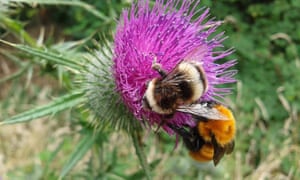
In May the South American scientists are joining an international team in the UK as part of a new project to safeguard pollination services, led by Professor Matthew Heard at the Centre for Ecology & Hydrology.
We want to engage all stakeholders in the issue and look at where and when invasive species can be a problem and to examine the many potential drivers in the decline of native pollinators, says Heard.
As for how to halt the millions of European buff-tailed bumblebees already spreading across South America, Japan may have the answer. Researchers there are proposing a drastic solution, spraying growth-regulator insecticides on foraging bees, who take it back to their nests where it inhibits the development of the colony. In a paper earlier this year they said it had been used to control invasive hornets and ants and is, the optimal method for suppressing invasive buff-tailed bumblebees.
In Chile, Smith-Ramrez says: It may sound extreme, but when the lives of our native bumblebees and the health of our ecosystem and all the flora and fauna that live there are at stake, we will have to consider it.
-
Alison Benjamin is a Guardian journalist and co-author of The Good Bee: A Celebration of Bees and How to Save Them, published on 2 May by Michael OMara, 9.99. Order a copy from the Guardian bookshop for 6.99


Recent Comments